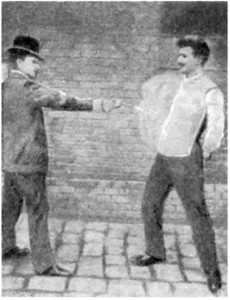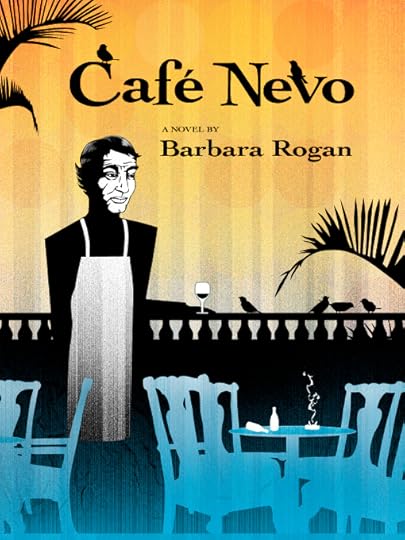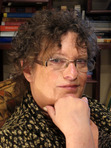Barbara Rogan's Blog, page 6
July 2, 2013
A DANGEROUS FICTION giveaway
 Send to Kindle
Send to KindleI’m excited to announce that Viking is giving away 20 galleys of A DANGEROUS FICTION, the first book in a series of mysteries featuring literary agent Jo Donovan. Only three weeks to pub date, but you could be among the first to read! Sign up here on Goodreads for your chance to win a free copy.
Today Penguin and Random House completed their merger, so I guess I’m now a Random House author. The combined company with all their imprints will account for about 25% of all books published in the U.S. Pretty exciting! It’s just a shame, as my friend Darlene Marshall pointed out, that they didn’t name the new company Random Penguin.
Good luck on the draw! Let me know if you win a copy.
June 26, 2013
Happy Birthday, In Cold Ink!
 Send to Kindle
Send to KindleIt’s been just over a year since I started In Cold Ink. Like most anniversaries, this seems like a good time to reflect on the experience. As you can see in my first post, I started out with some trepidation. I juggle a lot of jobs, and when I write I’m prone to obsession. I worried that a blog, in my hands, would become just one more thing to neglect. And you can’t neglect a blog. It’s like babysitting the neighbor’s kid, except that you can’t plop the blog down in front of the t.v. and expect it to amuse itself.
But I had things to say, as a writer but also as a longtime publishing professional. Before I gave it all up to write my own books, I was an editor in a large New York publisher and a literary agent. My career path has given me a multifaceted perspective on the industry, and I wanted to share some of what I’ve learned and demystify an industry that from the outside can seem remote, strange in its ways and potentially hostile. I also wanted to learn from others. Publishing is an industry in turmoil, on the cusp of profound change, and I wanted to explore that evolving world.
The results have exceeded my expectations. A surprising number of readers found their way to the blog: nearly 24,000 visitors last time I checked. Many left comments, and I’ve met some smart, interesting people through the blog. I’ve had the opportunity to interview some publishing pros, who’ve shared valuable insights and perspectives, including literary agent Gail Hochman, Viking editor Tara Singh, and Editor-in-Chief of S&S, Marysue Rucci. Among the writers who’ve graced my doors are Diana Gabaldon, Tiffany Allee, Lorraine Bartlett and Mika Ashley-Hollinger.
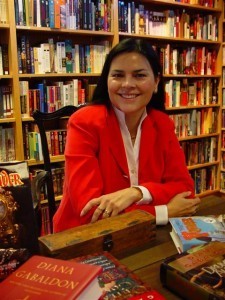 It was interesting to see what posts attracted the most reads. The most popular by far is my two-part interview with bestselling author Diana Gabaldon, of Outlander fame…and I do mean fame. Her fans would follow her anywhere, and they followed her to my blog. Second in popularity is my interview with literary agent Gail Hochman, also a two-parter, and very meaty in terms of how agents work, what they look for in new writers and what they avoid. Third is a post called “Ten Things Writers Should Expect from Literary Agents,” which I wrote because, while lots of writers are busy hunting for agents, few know what to expect once they nab one.
It was interesting to see what posts attracted the most reads. The most popular by far is my two-part interview with bestselling author Diana Gabaldon, of Outlander fame…and I do mean fame. Her fans would follow her anywhere, and they followed her to my blog. Second in popularity is my interview with literary agent Gail Hochman, also a two-parter, and very meaty in terms of how agents work, what they look for in new writers and what they avoid. Third is a post called “Ten Things Writers Should Expect from Literary Agents,” which I wrote because, while lots of writers are busy hunting for agents, few know what to expect once they nab one.
Looking over the list of posts also reminded me of some of my favorites, which I’ll mention just in case you missed them. “What if J.K. Rowling Had Self-Published?” is one. It’s my fullest answer to a question I hear frequently: “If I have a choice, am I better off seeking an agent who will then seek a publisher or self-publishing?”
“Medicalert: The Scourge of Premature Submission” is a comical piece with a serious message. “Digging up Blurbs” shares some of the 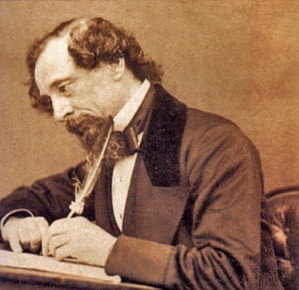 amazing blurbs my latest book received posthumously, from writers like Jane Austen, Hemingway, and Dickens. (I thought it was funny, anyway, even if one reader took it way too seriously and accused me of literary grave-robbing. ) “Too Much Body Language, She Said, Frowning” focues on the essential matter of craft in writing. Finally, this one has nothing to do with writing but is so worth reading: “A Former Slave Writes to His Master.”
amazing blurbs my latest book received posthumously, from writers like Jane Austen, Hemingway, and Dickens. (I thought it was funny, anyway, even if one reader took it way too seriously and accused me of literary grave-robbing. ) “Too Much Body Language, She Said, Frowning” focues on the essential matter of craft in writing. Finally, this one has nothing to do with writing but is so worth reading: “A Former Slave Writes to His Master.”
The last year has been a momentous one for me, with a new book on the way and five (five!!!) earlier books reissued. Happy events; but like other Happy Events, very time-consuming. If it weren’t for the support and engagement of this blog’s readers, I would never have been able to keep it going, but now the blog is a part of my life. I look forward to an exciting year ahead, with lots more interviews with publishing insiders, writing advice, and reflections on our changing industry. I also look forward to sharing with you all the events surrounding the publication of my new novel, A DANGEROUS FICTION, coming out in less than a month with Viking Books… including all the fun stuff that goes on behind the scenes.
Thanks for reading.
June 8, 2013
Settings
 Send to Kindle
Send to KindleThe best way to sell a book has nothing to do with creating a platform or schmoozing with editors at writers’ conferences (though neither of those things hurt.) It’s writing a book that’s what agents call bulletproof—one so good that no one in the long chain of approvers can resist it.
In this blog, I talk a lot about the business of publishing, which is in a fascinating state of flux at the moment. I also write a lot about the process of submitting one’s work. But every now and then I like to take a step back to consider the basics. Writers who want to sell their work must learn to write on their own dime; they need to master their craft. Dare I suggest that for people with writing talent, time invested in learning craft– by reading books on the subject, taking courses, working with mentors and good critique groups–will ultimately yield better results than the same amount of time spend networking?
This is part two in a series of blog posts about the craft of writing. It’s adapted from one lecture in a course I teach at www.nextlevelworkshop.com called One Good Scene, and it focuses on the importance of setting. In a later post I’ll go into the nuts and bolts of describing setting.
Every scene takes place somewhere. That particular place and time may be actual or imagined, but that setting must feel real to the reader or nothing that takes place there will feel real. The way to accomplish this is through description that is vivid, concrete, and specific. I’ll talk more about the techniques for conveying setting in a later post; right now I want to focus on its functions in the scene.
Good writing is efficient writing. Novels may be expansive compared to short stories, but all the parts must mesh together and function in tandem or the thing won’t run. Thus setting should not be chosen at random any more than characters should be. Rather, it should be an integral part of the whole, chosen to enhance whatever the writer is trying to accomplish in that scene.
Like every other element in fiction, it should multi-task. Setting always serves to enhance the reality of a scene, but it can also define and affect characters, advance the plot, reveal themes, and create an appropriate atmosphere. D.H. Lawrence, no slouch in the setting department, wrote that “setting provides an ‘emotional landscape’ upon which a character’s own temperament may play counterpoint or may resonate in a wonderful symphony.”
In real life, all of us have a relationship with our environment. It affects us and we, in turn, affect it. On a macro scale, think of global warming; on a micro scale, think of the impact one person’s troubles has on his home or work environment.
In fiction, too, there is a necessary relationship between character and setting. Sometimes that connection is overt and in the foreground. In THE OLD MAN AND THE SEA, for example, the sea serves as the antagonist. In a story about a pioneer family staking out a homestead, the push-pull between human desire and nature’s power is likely to be an explicit part of the story’s plot and theme, as well as a testing ground for character. In a haunted house tale, the setting provides plot as well as characterization, since the characters’ reactions to what happens there will shed light on them.
But even in stories whose setting is kept in the background, there is still, or there should be, a relationship between setting and characterization. Our characters’ homes, their possessions, the contents of their drawers: all these can reveal much about them, if we pick the right details to highlight.
Fiction gives us the ability to inhabit our characters and see through their eyes. As you describe your setting, always consider whose eyes you’re seeing through. What your viewpoint character notices about his environment tells us as much about him as it does about his surroundings. A cop walking down a city street will notice completely different things than a love-struck young girl walking hand-in-hand with her boyfriend down the very same street. In Pete Dexter’s wonderful novel Paris Trout, the title character runs a grocery store in the pre-refrigeration South. When his wife walks into the store unexpectedly, he looks at her as he would “six crates of melons that showed up unordered.” How much does that lovely bit of description tell us about Trout and the state of his marriage?
Setting Reveals Theme and Create Atmosphere
For examples of settings that embody a book’s theme and create its atmosphere. think of the great Gothic novels: the descriptions of Manderlay in Rebecca, of the heath in Wuthering Heights. As John Gardner wrote, “Description is the author’s way of reaching deep into his unconscious.” It is symbolic, not because the writer deliberately plants symbols like someone secreting Easter eggs around the yard, but rather because the symbols arise out of the writer’s deep, often preconscious understanding of what the book is about: its theme.
Because descriptions appeal directly to the senses, they evoke the emotions that are linked to those sensory memories, some of which are fairly universal. The smell of fresh-cut grass, fresh-baked bread, or a baby’s hair are likely to evoke not only images but feelings in the reader. And those feelings create a certain atmosphere.
To illustrate, here are two different versions of a brief scene: a character walking to his van.
1. Caleb walked down the street to his van.
What do you know about Caleb from this line? Where is he? What time of day, what season? What does his van tell you about him? How do you feel about him? What sort of feeling does the scene leave you with?
Don’t know? Let’s try version 2.
2. Caleb shuffled down the avenue in his oversized duffle coat, his cap pulled down low. He kept to the curb, skirting the light cast by plate-glass windows full of Christmas decorations and fancy goods he couldn’t afford and wouldn’t want if he could. His stomach growled at the smell of roasting chestnuts and spitted meat, but he passed the carts without pausing. Women were all around him, soft and fleshy, streaming out of office buildings, weaving between cars, pooling on corners as they waited for the lights to change, bending to adjust a shoe strap, flashing their legs, swinging their shiny hair, laughing and talking, though never to Caleb. He saw them, but they never saw him…until he was ready for them to see.
He circled the van before opening the door, checking for tickets, but of course there were none; he’d been careful to park legally. The van was a white Dodge Caravan, not so old as to attract attention but too old to warrant stealing. The exterior was grimy, the interior immaculate. The engine was good. He hadn’t had to do a thing to the van since taking it off the old man, except for the tinted windows, and those were a necessary expense.
What do you know about Caleb? Where is he? What time of day, what season? What does his van suggest about him? How do you feel about him? What sort of feeling does the scene leave you with?
Can you answer those questions now?
What about your own work? As you think about it now, is setting integral or incidental to your stories?
Information on ONE GOOD SCENE and my other online writing workshops
May 24, 2013
Interview with Marysue Rucci of S&S
 Send to Kindle
Send to KindleI was rummaging through some old files the other day and came across an interview I conducted with Marysue Rucci, now editor-in-chief of Simon & Schuster. Marysue was kind enough to answer my questions back in 2002, when she was my editor at S&S, in aid of a keynote speech I was giving at a writers’ conference. Bear in mind that her answers represent her thinking at that time, which may have changed in the interim. Nevertheless I think it’s an extraordinarily useful piece in showing an editor’s insights and priorities, as well as what writers can do to help themselves and their books. I hope you’ll find it as helpful as I did.
Q: What can writers do to help their editors publish their books successfully?
A: Join writers’ groups, make friends with their local booksellers, create a website (and develop mailing lists), and publish “off the page” pieces, ideally just before or when their book is publishing – in magazines, newspapers, etc.
Q: How important is the personal relationship between editor and writer?
A: Respect is extremely important, in both directions. The book will always have the author’s name on it, and is the author’s baby, and I acknowledge that. It’s a waste of time, though, if the author doesn’t respect the editor’s ideas (or they simply don’t see eye to eye), for both author and editor.
Q: Describe the ideal writer, from the editor’s POV.
A: Timely, original, open to guidance but with a firm knowledge of the five W’s of his/her book (W’s being, who, what, where, when, why). And always generating ancillary article ideas/publishing stories to keep his/her name in the public eye.
Q: Describe the writer from hell, from the editor’s POV.
 A: Personally affronted by edits; argumentative, evasive and lazy when it comes to deadlines. The author who drags his/her feet makes an editor’s life hell, because the editor is the conduit to all other areas of the publishing house. The production, marketing, publicity, teams are hammering on your editor’s door.
A: Personally affronted by edits; argumentative, evasive and lazy when it comes to deadlines. The author who drags his/her feet makes an editor’s life hell, because the editor is the conduit to all other areas of the publishing house. The production, marketing, publicity, teams are hammering on your editor’s door.
Q: What are the questions you most dislike getting from writers?
A: How many cities will I be touring? Will you run ads?
Q: How does an editor balance the sometimes conflicting interests of writer and publisher?
A: Delicately. Your editor is your advocate in-house, which is another reason a good working relationship is important. The editor is supposed to gracefully navigate the publishing process and agitate for the author and the author’s interest while still understanding financial and/or other publishing limitations.
Q: What fallacies do writers harbor about editors?
A: That editors want to receive your manuscript before the editor goes on vacation; or before holidays; or at home. Also, that we speed-read. A normal manuscript should take at least a week to read; far longer to edit (well).
Q: To what extent are your decisions based on publishing trends and to what extent on personal taste?
A: Personal taste rules the day. It’s pointless to buy a book you don’t love.
Q: What do you see as the editor’s primary mission (apart from making money, which goes without saying.)?
A: Understanding an author’s vision and helping the author best realize that vision. Delivering a great manuscript to the in-house people so they can sell it well. Attempting to get quotes, and buzz.
Q: Are there agents you won’t work with? Why? What are their names? (Just kidding about that one.)
A: There are agents I’ve vowed not to work with, but I’ve gone back on my vow. Either because the agent is impossible to converse with in a realistic manner or because he/she did something underhanded (like shop an offer that shouldn’t have been shopped). When you’ve been burned by an agent, it takes an extraordinarily special project to make you come back to her/him.
Q: What makes editors stick to the job despite the ridiculous hours and notoriously low pay?
A: Love of reading, of course. The thrill of discovery, or potential thereof.
Thanks once again, Marysue!
News update: Lots of excitement as A DANGEROUS FICTION heads into the final stretch before pub date, July 25. Publishers Weekly gave the book a terrific review, and on May 20 they featured an interview with me. (Here’s the link, but unfortunately you have to be a subscriber to read the whole piece.) Viking’s wonderful PR department has set up several talks and signings in New York and Long Island venues. If you’re in the area, please put it on your calendars and stop by. If by chance you plan to buy a copy, you can save 35% on the hardcovers by preordering on Amazon, B&N or your online bookstore of choice. Viking recently gave away 100 galley copies in a sweepstakes. If you’re one of the winners, congratulations, and I hope you enjoy the book! If you weren’t, keep on eye on this blog. There will be other opportunities.
May 21, 2013
A DANGEROUS FICTION GIVEAWAY
 Send to Kindle
Send to KindleI owe you all a proper blog post, and will have one soon, but in the meantime I had to share this bit of news with you. Viking is doing a giveaway of A DANGEROUS FICTION ARC’s. There are 100 going out to readers who enter a Viking sweepstakes. You don’t have much time, though. Tomorrow, May 22, is the deadline, so get thee to the signup page!
Batting three for three on the pre-publication reviews, by the way. Publishers Weekly’s just came out, and it starts like this — “Someone in the New York publishing world is targeting literary agent Jo Donovan, the appealing, empathetic narrator of this clever mystery from Rogan (Suspicion), herself a former book editor and agent.” Library Journal wrote, “This literary mystery veers back and forth between insider-gossip tone…and genuine terror at warp speed, fulfilling many of the requirements for a perfect beach read.” And this from Booklist: “Boasting an exciting pace, well-constructed scenes, and inside information about the publishing world, this engaging mystery will attract readers of P. D. James’ similar Original Sin.” P.D. James, eat your heart out!
Anyway, folks, you can’t beat free. Here’s the link again. Good luck, and let me know if you win a copy!
May 12, 2013
Diana Gabaldon Interview Part 2
 Send to Kindle
Send to KindleI promised you the second half of my interview with Diana Gabaldon, the internationally bestselling author of the Outlander series, and you shall have it in just a moment. First, though, I have some exciting news of my own to share, and a confession to make.
The confession is this: I used to envy Diana. Not her work—I love her books, but they are hers and I have my own. No, what I envied was the fact that they were all in print, all the time. Readers who aren’t also writers may not realize how rare that is. Publishing is a bottom-line business, and shelf space is valuable; books that don’t sell very well are quickly replaced by new books. Just a few years ago, there were only a handful of living writers whose entire body of work could be found on the shelves of bookstores, even virtual ones. For the rest, the most one could hope for was to have a new book in hardcover while the one before it was still available in paperback. Once the stores started returning copies, the books were essentially dead, except for copies circulating in libraries and used-book stores. They’d be remaindered and declared officially out of print. Writers could then get their rights back, but there was nothing much they could do with them.
The explosion of ebooks has changed all that. Now it costs nothing for publishers to keep every book they’ve ever published in print perpetually, so long as they own the rights. And writers who have regained the rights to their old work can reissue it with an ebook publisher or on their own: the literary equivalent to the elixir of life. One year ago, Simon & Schuster published ebook editions of my last three books, SUSPICION, HINDSIGHT, and ROWING IN EDEN, and since then I’ve had the pleasure of seeing them out in the world, making friends and finding readers.
And now for the news I promised. Two of my earliest books, CAFÉ NEVO and SAVING GRACE, have just come out in e-book editions with E-Reads. Print editions will be available within a week. I’m quite proud of those books, and when they first came out other people seemed to like them too. 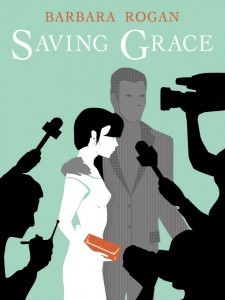
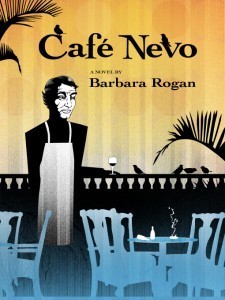 Kirkus called CAFÉ NEVO “An inspired, passionate work of fiction…a near-magical novel,” and Madeleine L’Engle praised it as “a wonderful novel…with richly developed characters acting and interacting…the café and its clients will long remain in memory.”
Kirkus called CAFÉ NEVO “An inspired, passionate work of fiction…a near-magical novel,” and Madeleine L’Engle praised it as “a wonderful novel…with richly developed characters acting and interacting…the café and its clients will long remain in memory.”
Library Journal wrote of SAVING GRACE: “Readers are quickly enmeshed and will be staying up all hours to see what happens next…what BONFIRE OF THE VANITIES tried to be.”
I know you’re all waiting for MOBY, as I am. In the interim, may I commend SAVING GRACE and CAFÉ NEVO to your attention?
And now, back to my interview with the delightful Diana Gabaldon, whom I no longer envy but admire as much as ever. If you haven’t already read Part 1, you can find it here. In Part 2, the second half of the interview, Diana talks about her life as an international literary star, her relationship with her fans, the book industry’s attitude toward women writers, and lots, lots more. Enjoy!
Q: I read some time ago about certain fanatical GAME OF THRONES readers who were furious that George Martin doesn’t churn the books out faster, ignoring any possible link between quality, time and effort. They seemed to feel he was holding the books hostage and could release them in the blink of an eye if he chose. The Outlander series inspires equal devotion among its readers. Have you ever had to deal with overzealous or irrational fans?
A: Deal with them? Well, they’re there, certainly. Most people have no idea how writers work, and many of them seem to feel that a writer is a sort of artistic Pez dispenser: all the stories are stacked up inside, one on top of the other, and all you have to do is bonk the writer on the head hard enough to make them spit one out.
(In re which, James Patterson and his marketing machine have done a lot to promote this injurious notion. For the record, folks—when the cover says, “by JAMES PATTERSON and someotherperson”, it was someotherperson who wrote the book. Don’t believe me? Google “James Patterson ghost writer.”)
That is, of course, not how it works. I explain, periodically, how it does work, and most of my readers are intelligent, well-meaning people who are happy to direct new readers to the places where I’ve explained my working methods.
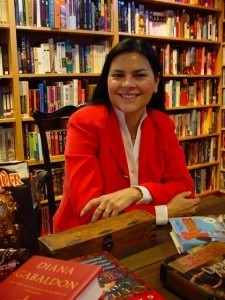 But as for dealing with people who clamor for the next book, all I can be is honest. I.e., it’s my name on the front of the book, and with luck, said book will be out there for a long time. Ergo, it’s going to be as good as I can make it before I send it to the publisher.
But as for dealing with people who clamor for the next book, all I can be is honest. I.e., it’s my name on the front of the book, and with luck, said book will be out there for a long time. Ergo, it’s going to be as good as I can make it before I send it to the publisher.
Barbara: Would you like to have lived in the world you created?
Diana: To a point. That point stopping well short of life-threatening disease, warfare, injury, extremes of temperature or gross poverty.
Barbara: Lord John Gray is one of my favorite characters of your invention. What made you choose a gay man in particular as a series character?
Diana: Well, that was an accident. Some years ago, I was invited to write a short story for a British anthology: historical crime stories. “Well,” I said to the editor, “it would be an interesting technical challenge, to see whether I can write anything under 300,000 words. Sure, why not?”
The obvious first question was—what or whom to write about? I didn’t want to use the main characters from the OUTLANDER series for this story, because—owing to the peculiar way I write—if I were to incorporate some significant event in this story (and it would need to be, to be a good story)—that would make the event a stumbling block in the growth of the next novel.
“But,” I said to myself, “there’s Lord John, isn’t there?” Lord John Grey is an important character in the OUTLANDER series, but he isn’t onstage all the time. And when he isn’t…well, plainly he’s off leading his life and having adventures elsewhere, and I could write about any of those adventures without causing complications for future novels. Beyond that obvious advantage, Lord John is a fascinating character. He’s what I call a “mushroom”—one of those unplanned people who pops up out of nowhere and walks off with any scene he’s in—and he talks to me easily (and wittily).
He’s also a gay man, in a time when to be homosexual was a capital offense, and Lord John has more than most to lose by discovery. He belongs to a noble family, he’s an officer in His Majesty’s Army, and loves both his family and his regiment; to have his private life discovered would damage—if not destroy—both. Consequently, he lives constantly with conflict, which makes him both deeply entertaining and easy to write about. So I wrote the short story—titled, “Lord John and the Hell-Fire Club”—for the British anthology.
Well, it was a good story; people liked it. But just as word was spreading into the US about it, the anthology went out of print (it was called PAST POISONS, edited by Maxim Jakubowski, for those bibliophiles who are curious). People kept asking me about the story, though, and I thought, “Well, I enjoyed writing it—maybe I should write two or three more short pieces about Lord John, just as time an inspiration allow…and when I have a handful, we could publish them as a book, and all the Lord John fans could get the stories easily.”
So I did that. I began writing the second Lord John story after returning from a book-tour, as a way of easing back into my writing routine, and continued working on it, picking away with one hand whilst picking up the threads of my novel with the other…and six months later, I’d just about finished it. Well, at this point, I left for another book-tour, in the UK, and stopped in New York on the way, to have lunch with my two literary agents.
I was telling them all about what I’d been doing, and casually mentioned that I’d nearly finished the second Lord John short story. “Oh?” said they. “How long’s this one?”
“Well, I knew you’d ask,” I said. “So I checked last night. It’s about 85,000 words; I need maybe another 5000 to wrap it up.”
The agents looked at each other, then looked at me, and with one voice said, “That’s the size normal books are!”
“I thought it was a short story,” I said.
“Well, it’s not,” they said—and proceeded to take it off and sell it all over the place. Publishers were thrilled. “It’s a Gabaldon book we weren’t expecting—and it’s short! Can she do that again?” they asked eagerly. To which my agents—being Very Good agents—replied, “Of course she can,” and emerged with a contract for three Lord John Grey novels.
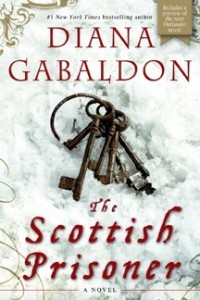 Now, the Lord John books and novellas are in fact an integral part of the larger OUTLANDER series. However, they’re focused (not unreasonably) on the character of John Grey, and—Lord John not being a time-traveler—tend not to include time-travel as an element. They’re structured more or less as historical mystery, but do (like anything else I write) include the occasional supernatural bit or other off-the-wall elements. (Yes, they do have sex, though I don’t consider that really unusual, myself.) And they do reference events, characters (particularly Jamie Fraser) and situations from the OUTLANDER novels.
Now, the Lord John books and novellas are in fact an integral part of the larger OUTLANDER series. However, they’re focused (not unreasonably) on the character of John Grey, and—Lord John not being a time-traveler—tend not to include time-travel as an element. They’re structured more or less as historical mystery, but do (like anything else I write) include the occasional supernatural bit or other off-the-wall elements. (Yes, they do have sex, though I don’t consider that really unusual, myself.) And they do reference events, characters (particularly Jamie Fraser) and situations from the OUTLANDER novels.
In terms of chronology, the Lord John books fall during the period covered in VOYAGER, while Jamie Fraser was a prisoner at Helwater. So if you’re wondering where to read the Lord John books in conjunction with the larger series—you can read them anytime after VOYAGER.
In terms of further chronology: As well as the three Lord John novels under contract, I’ve also written several novellas for various anthologies. Three novellas (two previously published and one written specifically for the volume) are included in a book titled LORD JOHN AND THE HAND OF DEVILS, while two further novellas have appeared or will shortly appear in anthologies. The original short story (“Hell-Fire Club”) preceded the first novel, and—just to be confusing—the novellas fall between the novels.
The books and novellas do stand alone, and can be read separately in any order. If you do want to read them in strict order, though, here it is:
“Hell-Fire Club” [short story. Originally published in PAST POISONS, ed. Maxim Jakubowski. Collected in HAND OF DEVILS]
LORD JOHN AND THE PRIVATE MATTER [novel]
“Lord John and the Succubus” [novella, originally published in LEGENDS II: Short novels by the Masters of Modern Fantasy, edited by Robert Silverberg. Collected in HAND OF DEVILS]
LORD JOHN AND THE BROTHERHOOD OF THE BLADE [novel]
“Lord John and the Haunted Soldier” [novella. Published only in HAND OF DEVILS]
LORD JOHN AND THE HAND OF DEVILS [book-length collections of three novellas: “Hell-Fire Club,” “Succubus,” and “Haunted Soldier”]
“Lord John and the Custom of the Army” [novella, originally published in WARRIORS, edited by George R.R. Martin and Gardner Dozois.]
LORD JOHN AND THE SCOTTISH PRISONER [novel. This one is actually a hybrid, as it’s half John, half Jamie.]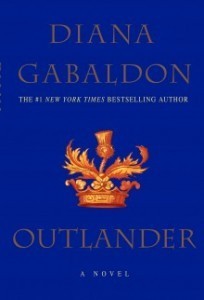 b
b
“Lord John and the Plague of Zombies” [novella. Published in DOWN THESE STRANGE STREETS, edited by George R.R. Martin and Gardner Dozois, 2011.]
NB: “The Custom of the Army” and “A Plague of Zombies” are both available (in the US and Canada) as standalone ebooks (as are a couple of other non-Lord John novellas).
Barbara: Was his sexuality or your portrayal of it an issue for any of your publishers, domestic or foreign?
Diana: I think some of the foreign publishers may have boggled slightly at it, but no one’s ever said anything directly to me about it, no.
Barbara: The upside of great literary success is plain to see: millions of books sold, legions of devoted fans, awards, invitations to the White House, the opportunity to inhabit a wider world full of interesting accomplished people. Is there a downside?
Diana: The major drawback is the sheer amount of travel and appearances (both in person and online) associated with being very popular in a lot of different places. I really like to talk to readers and sign books—but I could do without the enormously time-consuming (and energy-sapping) travel involved in getting to them.
Then there are the constant demands for “content”—updates to websites, phone interviews, interviews for blogs , podcasts, Twitter, Facebook, etc. (though I know how to deal with Twitter and Facebook; I spend an average of 10-15 minutes a day on each, and that’s It. I have no Friends , and I don’t follow anybody).
And there are the readers who think they’re entitled to dictate when and what a favorite writer writes, and yap at me in public about why am I writing all this Other Stuff, when THEY only want Jamie and Claire? And why am I gallivanting all over the place, when I should be home WORKING? These people are, of course, sadly mistaken about the importance of their opinions, but can be a little annoying. Luckily most of my readers are very intelligent and have beautiful manners.
Barbara: What do you know now about writing that would have helped you when you first started out?
Diana: I’m not sure I actually know anything more about writing now than I did when I started—though I like to hope that I improve with experience. Most of the novel (sic) things I do, in terms of ambitious structure, time-juggling, and playing with literary devices, are things that are the result of experience; I couldn’t have done them when I was first writing, whether I knew about them or not.
Barbara: What do you know now about publishing that you wish you’d known earlier?
Diana: Just who has the power in various situations. For example, it took me eight years of hassling with Barnes and Noble in an attempt to make them move my novels out of the Romance section—until I finally got fed up and wrote a rude letter to Steve Riggio, then the CEO. Twenty-four hours later, I got a call from the B&N VP of Marketing, telling me they were moving the books to Fiction, where they’d belonged all along. Had I know that Mr. Riggio was the only person in that company who could change the diktat on where books went, I’d have started with him.
Barbara: Do you think women writers are taken as seriously as men by the literary/critical establishment?
Diana: Of course not.
Barbara: What’s the most common misconception readers have about you? (Here’s your chance to correct it!)
Diana: Well, they all seem to think I’m much taller than I actually am, and they can’t pronounce my name, but neither of those misapprehensions is actually offensive. (For the record: I’m five-foot-two-and-a-half. And my name has two pronunciations, both accurate: If you’re speaking Spanish (it is a Spanish name, and it is my own, not my husband’s), it’s pronounced “gaah-vahl-DOHN” (rhymes with stone). If you’re speaking English, it’s “GAH-bull-dohn” (still rhymes with stone).
That’s it, folks. Please feel free to comment on what you’ve read, or just to say hey. A hearty thank you to Diana; and to her and all the other mothers out there, I wish a very happy Mothers’ Day.
May 6, 2013
Diana Gabaldon Interview, Part I
 Send to Kindle
Send to KindleDiana Gabaldon is the author of the award-winning, #1 NYT-bestselling OUTLANDER novels, described by Salon magazine as “the smartest historical sci-fi adventure-romance story ever written by a science Ph.D. with a background in scripting “Scrooge McDuck” comics.” The series is published in 26 countries and 23 languages, with more than nineteen million copies in print worldwide and a miniseries in the works.
I’ve known Diana for fifteen years or so, ever since we met on the Compuserve Book and Author forum. For several years we both served as presenters at the Surrey International Writers Conference and had the opportunity to hang out in real life. Everyone who’s read her work knows Diana is a spellbinding storyteller. What you may not know, unless you’ve met her, is that she’s as delightful a person as she is a writer. She does a great deal for others that never gets talked about or reported, and I’m not going to out her here, except to say that she ministers to those who most need it and she goes out of her way to help fellow writers, as I know from personal experience. (See Diana’s comment on my forthcoming thriller, A DANGEROUS FICTION.)
Back when that book was just beginning its journey into print, I asked some friends to brainstorm titles. Diana came up with “In Cold Ink.” In the end it didn’t quite fit as the book’s title, but I loved it so much I adopted it as the name of my blog, making Diana its godmother. Now she has graciously paid us a visit and bestowed an interview, which I’m delighted to share with you here in several parts. In this first segment, we talk about Diana’s origins as a writer, her taxonomy of character types, and her own writing process. Along the way she punctures a few misconceptions.
Q: Were you a great reader as a child? What were your favorite books?
A: Yes. My mother taught me to read at the age of three; I can’t remember not being able to read. I do remember turning up on the first day of kindergarten, flipping critically through DICK AND JANE and dropping it, remarking, “That’s a stupid book. Is there anything else to read?” (I was not a tactful child.)
I read—and still do read—just about anything. I read my way through the entire children’s section of the Flagstaff Public Library by the third grade, at which point I went on to the adult section (my mother having assured the librarian—who was Very Dubious about this—that I could take out anything I wanted to). Among the things I read repeatedly, though, were ALICE IN WONDERLAND, THE SWISS FAMILY ROBINSON, the Oz books, all the Andrew Lang Fairy Books, the entire series of biographies of famous people for children, and any Walt Disney comic I could get my hands on.
Q: Do you recall a specific moment when you realized that you’d like to write stories yourself?
A: Yeah. I was about eight, and coming back in the car from a family outing to the cinder hills near Flagstaff (we often went out there on Sundays when the weather was nice). It was summer and the daily thunderstorm was shaping up overhead. I remember looking up into the clouds and talking to God—I wasn’t praying, just talking to Him—and saying, “I want to write books. I think I’m supposed to write books.” Mind—at this point, the notion of WRITING A BOOK was the most far-fetched, impossible thing I could imagine. I might as well have said, “I think I want to fly to Mars.”
I didn’t have the slightest idea how books were written, let alone how they got onto the library shelves (didn’t know people got paid for writing books, either; when I found that out, it seemed like an amazing bonus).
Anyway, God said (more or less), “Yes, that’s right. You should.”
Q: First novels are often autobiographical in some fashion or another. You haven’t got a drop of Scottish blood in you, you were never a nurse and you haven’t (as far as I know) time-traveled. Is there anything in OUTLANDER that did draw upon your own life experience and/or passions?
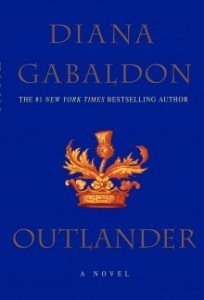 A: If you write an honest book, most of it is you, regardless of setting, time period, or the external aspects of your characters. And the idiotic assumption that one can only write about one’s own life experience—if widely adopted—would have prevented most of the world’s great books being written. (Not saying you’re an idiot, mind you .) It’s just that that stupid, “Write what you know” axiom has been propagated so much that people don’t stop to question it, and thus don’t realize that it’s backward. It’s not that you should limit yourself to using your own life as material; it’s that you shouldn’t write what you don’t know—but you can find out anything you need to know.
A: If you write an honest book, most of it is you, regardless of setting, time period, or the external aspects of your characters. And the idiotic assumption that one can only write about one’s own life experience—if widely adopted—would have prevented most of the world’s great books being written. (Not saying you’re an idiot, mind you .) It’s just that that stupid, “Write what you know” axiom has been propagated so much that people don’t stop to question it, and thus don’t realize that it’s backward. It’s not that you should limit yourself to using your own life as material; it’s that you shouldn’t write what you don’t know—but you can find out anything you need to know.
There’s also this little item called “imagination,” which I think is given remarkably short shrift these days. As a novelist, I can be Anybody. Anytime, Any place, in any condition of body or mind. Why should I just be me? How boring.
(Not even going to touch the equally prevalent attitude that a writer should for some reason be strongly drawn to write about his or her ethnic background—but only if s/he isn’t white. People keep pestering me to “write about your heritage,” by which they mean the New Mexican/Hispanic side. Why don’t they pester me to write about the English or German side, assuming I wanted to write about my heritage in the first place, which I don’t?)
But returning to what you actually asked : Sure. Owing to a series of academic accidents, I taught classes in Human Anatomy and Physiology in several different institutions, including Temple University’s School of Nursing. Now, this had nothing whatever to do with my own scientific interests, background, or research specialties—they just paid me for doing it. But the material was undeniably interesting—and it gave me the broad but shallow grasp of clinical medicine that is the core of Claire’s work as a healer and physician.
Now, I was a field ecologist for some time. Which means I naturally look at what’s going on around me when I’m outdoors. I know what the basic features of a given ecosystem type are—which means that whether I’m looking at the Scottish Highlands or the North Carolina mountains, I know that there will birds species doing X, and plant species that fill Y niche, and so on. Beyond that, it’s just a matter of looking up the specific plants and animals, and that’s a matter of very simple research.
I’m sixty-one. I’ve been in love, been married, borne children, had people near me die. Naturally bits and pieces of all these experiences filter through into the books I write. Be strange if they didn’t, wouldn’t it?
Q: You have many readers who are passionate about your books and personally invested in the characters. Putting all modesty aside, why do you think readers connect so deeply with your characters?
A: I do write honest books, so far as it lies in my power to do so. People recognize reality (in terms of character and situation and emotion) when they see it, and it’s natural for them to empathize with people they see as real.
(The Washington Post recently asked me for “a few sentences” describing what I did for Valentine’s Day, for a column in which such bits from a dozen (female) authors were quoted. Most of the other participants went on about going out for a romantic dinner with their husband and toasting each other with pink champagne, or…well…take this one:
“I love seeing the glowing pyres of fat, deep red-red roses in full cry, displays of pink Champagne and boxes of chocolates that spring up all over London, and hope that a glorious bunch might find its way to me. Yet, if I was giving roses to a man on this particular day (and why not, for all sensual men love them), I’d buy flame orange, rich yellow or creamy, pink-tinged white; and pretend — because I’m old fashioned — that it was merely joie de vivre, or exuberance, or entirely accidental….”
And then there was what I said (the absolute un—er—varnished truth:
“We’re having the saltillo tile floors resealed. This means having to move all the furniture, send the dogs to my son’s house for a sleepover, and walk around in our socks for two days. Our bed is disassembled and hidden in the closet, so I’m sleeping in a daughter’s room, and my husband is nesting somewhere in the living room (where all the furniture is). On the other hand, romance is not dead; he gave me a bathrobe and a card with a singing bug, and I gave him a jar of white anchovy filets and a tube of wasabi paste.”
Now, clearly one would like to escape now and then and wallow in thoughts of accidental roses…but which author do you think you might feel more connected with, on the basis of these brief snips?)
Q: It’s hard for readers to imagine characters in their embryonic state, when we experience them as fully-developed, complicated human beings. But characters don’t spring to life that way. Can you talk a bit about how you go about growing characters from stick figures into people?
A: But I don’t do that. I know there are a lot of popular assumptions about how writers work, and the notion that one decides that a specific character is needed, equips him or her with a name, and then sets to work collecting pictures of actors and drawing up index cards with the character’s taste in peanut-butter is certainly one of them. It’s possible that some writers really do do that, and God help them, if so—whatever works, you know?
For me, characters are pretty organic. I don’t plot a story and insert characters; the story exists because these particular people have needs and desires and motivations, and finding themselves in a particular situation, act upon them.
You hear about “plot-driven” stories vs. “character-driven” stories (and why always “versus,” I wonder? There’s nothing antithetical between plot and character)—but in fact, the plot is simply what the characters do. They may do what they do in part because of the situation and circumstances in which they find themselves—but they do what they do mostly because they are who they are.
For me, characters tend to fall into one of three main types: mushrooms, onions, and hard nuts. (That’s not a description of their personalities, btw, but rather of the way in which I work with them, and them with me.)
Mushrooms are the delightful people who spring into life unexpectedly and walk right off with any scene they’re in. Lord John Grey is a mushroom, as is Mr. 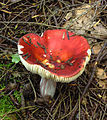 Willoughby, the Chinese poet with a notable foot fetish, and Mrs. Figg, Lord John’s redoubtable housekeeper (“Mrs. Figg was smoothly spherical, gleamingly black, and inclined to glide silently up behind one like a menacing ball-bearing.”). They talk to me freely, and I never have to stop and wonder what they’d do in any given situation—they just do it.
Willoughby, the Chinese poet with a notable foot fetish, and Mrs. Figg, Lord John’s redoubtable housekeeper (“Mrs. Figg was smoothly spherical, gleamingly black, and inclined to glide silently up behind one like a menacing ball-bearing.”). They talk to me freely, and I never have to stop and wonder what they’d do in any given situation—they just do it.
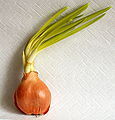 Onions are the ones whose innermost essence I apprehend immediately—but the longer I work with them, the more layers they develop, and thus the more well-rounded and pungent they become. Jamie Fraser and Claire Beauchamp Randall are both onions.
Onions are the ones whose innermost essence I apprehend immediately—but the longer I work with them, the more layers they develop, and thus the more well-rounded and pungent they become. Jamie Fraser and Claire Beauchamp Randall are both onions.
Hard nuts are pretty much what they sound like. These are the people who “come with” a story by default, rather than developing organically by popping out of the mental compost. Historical figures, for instance, who were necessarily there, and have to be animated in a satisfying way, or people who exist only because another character was pregnant, leaving me with an unknown child to deal with. These, I just research (for the historical people) or live with (for the unknowns), and gradually, I begin to have a sense of them. But as with everyone else, they truly “develop” only in the context of their own situation and circumstance.
End of Part 1.
In part 2 of the interview, Diana goes on to talk about her relationship with her readers, some controversial choices, and the demands that literary success imposes on the writer’s personal life. Sign up for the blog’s email or RSS feed so you won’t miss it!
Thanks, Diana!
Are you an Outlander fan? How did you discover the series, and what keeps you coming back? Let’s chat in the comments section.
May 5, 2013
FIRST REVIEWS!
 Send to Kindle
Send to KindleI’m thrilled to share the first pre-publication reviews of A DANGEROUS FICTION, coming out on July 27 with Viking Books. I wish I could quote the whole reviews, but for copyright reasons I don’t think I can. I can, however, share these excerpts:
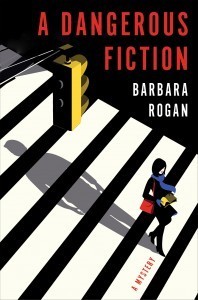 Library Journal wrote, “This literary mystery veers back and forth between insider-gossip tone…and genuine terror at warp speed, fulfilling many of the requirements for a perfect beach read.”
Library Journal wrote, “This literary mystery veers back and forth between insider-gossip tone…and genuine terror at warp speed, fulfilling many of the requirements for a perfect beach read.”
And Booklist wrote, “Boasting an exciting pace, well-constructed scenes, and inside information about the publishing world, this engaging mystery will attract readers of P. D. James’ similar Original Sin (1995), an Adam Dalgliesh crime story set in theLondon publishing world.”
Thanks so much, Library Journal and Booklist!
A DANGEROUS FICTION is available for preorder as a hardcover and an ebook. If you’re a print book person and like a bargain, the hardcover is currently listed at 35% off on the major bookseller sites.
I love to meet readers! If you’re in New York or on Long Island, please come out and say hi. I’ll be reading and signing books at the Barnes and Noble in Carle Place, NY, on July 29, 2013 at 7 PM and at the Mysterious Bookshop in Tribeca, NYC.
And now, to return to our regular program: Make sure you check back soon, because in a day or two I’m posting Part 1 of an in-depth interview with bestselling author Diana Gabaldon of OUTLANDER fame. In fact, you might want to subscribe to the blog via email or RSS feed so as not to miss it.
April 29, 2013
Two Cover Reveals
 Send to Kindle
Send to KindlePrint books have tragically short lives, much shorter than butterflies. They are born, they appear for a short while in bookstores, and a few weeks later, unsold copies are sent back to the publisher. Eventually unsold stock is released as remainders, and once those are gone–sold or pulped–the book is out of print. Only the most popular and fortunate of writers had the pleasure of seeing all their work in print at the same time. Readers lost out, too, when they couldn’t find backlist books of writers they enjoyed.
The advent of ebooks and POD has changed all that, to the great benefit of writers and readers alike. I’ve already had the pleasure of seeing my three last books, SUSPICION, HINDSIGHT, and ROWING IN EDEN, reissued by Simon & Schuster in those formats. Today I am delighted to announce that two more books will soon join their ranks. CAFE NEVO and SAVING GRACE were my second and third novels. Both were wonderfully reviewed when they first came out, and I’m thrilled that they’ll now have the chance to find new readers.
In a few days I’ll let you know the exact pub date, but it won’t be long now. For the moment, I’m very happy to share my new covers, both illustrated and designed by Gale Haut.
“A wonderful novel…vivid…unforgettable.”-San Francisco Chronicle
“From the very first line of CAFÉ NEVO we are in the hands of a real storyteller. Barbara Rogan writes with compelling grace.”-Alice Hoffman
“Indeed a wonderful novel…with richly developed characters acting and interacting… the café and its clients will long remain in memory.”-Madeleine L’Engle
And here’s the cover for SAVING GRACE:
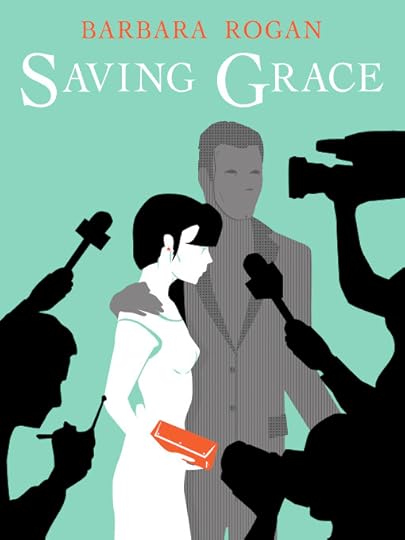
“What “Bonfire of the Vanities” tried to be.”-Library Journal
“Intelligent, absorbing…sheer enjoyment.”-Publishers Weekly
What do you think? Do these covers make you want to pick up the book and browse? What do they say about the books?
Next week, I’ll be posting Part I of a fascinating interview with the wonderful Diana Gabaldon, bestselling author of the Outlander series. This is not to be missed, so you might want to sign onto the RLS feed or subscribe via email through the links to your right.
April 20, 2013
Publish AND Self-Publish: an Interview with Bestselling Author Lorraine Bartlett
 Send to Kindle
Send to KindleI’ve got a delightful surprise today: an interview with one of the savviest writers I know, Lorraine Bartlett. Lorraine writes fiction under several names, including Lorna Barrett. If you don’t already know her work, waste no time! The immensely popular Booktown Mystery series is what put Lorraine Bartlett’s pen name, Lorna Barrett, on the New York Times Bestseller list, but it’s her talent – whether writing as Lorna, or L.L. Bartlett, or Lorraine Bartlett — that keeps her there. This multi-published, Agatha-nominated author pens the exciting Jeff Resnick Mysteries as well as the acclaimed Victoria Square Mystery series, and now the Tales of Telenia saga, and has many short stories and novellas to her name(s). Check out the links to all her works here.
A lot of writers agonize over publishing vs. self-publishing. Lorraine does both very successfully. I’m delighted to pass along some of her insights into the advantages of having the best of both worlds.
Q: When did you first know you wanted to write? Was that realization prompted by any particular book you read?
A: As a teenager, I discovered Star Trek fanzines. Regular people were writing fan stories that were good—and expanded the boundaries of the series. I though t to myself, “I could do that, too.” And so I did … although not very well. It took many years to get where I am now. I never thought I’d have a career as a writer.
Q: Earlier in your career, you wrote stories for romance magazines. Did that contribute to selling your first novel?
A: No, but it got me the professional sales I needed to join Mystery Writers of America. I wanted that kind of credibility. At the time, I felt it was necessary in order to get noticed by literary agents.
Q: How did that first book sale come about? Did you go through the traditional agent search?
A: I was rejected by literally hundreds of agents (and only tossed all those rejection letters last year). It was my third agent who finally sold my first book to a small press where it failed abysmally. Currently, thanks to self-publishing, that book (and series) is my best seller.
Q: What made you choose mystery as your genre?
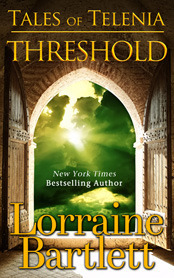 A: I knew I’d never be able to write sexy romances, and mystery seemed the next best genre. Although now I’m trying my hand at what I call “fantasy lite” with the Tales of Telenia novels. (They are THRESHOLD and JOURNEY … and I’m plotting a third now.) I write character-driven stories, and I like strong women with an entrepreneurial flair.
A: I knew I’d never be able to write sexy romances, and mystery seemed the next best genre. Although now I’m trying my hand at what I call “fantasy lite” with the Tales of Telenia novels. (They are THRESHOLD and JOURNEY … and I’m plotting a third now.) I write character-driven stories, and I like strong women with an entrepreneurial flair.
Q: You’ve published under three names: Lorraine Bartlett, Lorna Barrett, and LL Bartlett. Why is that, and will you continue to write new books under each name?
A: When I sold the Jeff Resnick series, my agent suggested I write under the name L.L. Bartlett as she felt (and was right at the time) that men wouldn’t buy a book written by a woman. I’m happy to say that things have changed in the last decade and that I’m finding more and more male readers every day—even for my cozy mysteries. It just goes to prove that people like character driven stories—be the protagonist male or female.
As psychological suspense and cozy mysteries are quite different, I was asked by my publisher to take a pseudonym for the Booktown Mysteries. By the time I sold the Victoria Square Mysteries, I wanted people to know (okay—all the kids in my high school graduating class who thought I was some kind of geek) that I could be successful under my own name. Two of the three books under that name have hit the New York Times bestsellers list, but my Lorraine Bartlett website gets far less hits than the other two.
If I had it to do over, I’d only write under one name.
Q: You’ve written several different series and they’ve all done well. What do you think are the key elements to a successful series? And a related question: What mystery series (plural), past or present, do you particularly admire?
A: Character-driven stories. The reader must be able to relate to or feel something for the characters. I get letters from readers telling me they can’t stand Angelica Miles because she’s a bossy, opinionated person. In other words, she’s a big sister and acts like it. Despite the fact I never had a sister, I’ve somehow managed to capture that love-hate relationship sisters often have. I’ve had many more letters from readers telling me the relationship between Angelica and Tricia mirrors the relationship they have with their own sisters. I also write about brothers in the Jeff Resnick Mysteries. Brothers I understand. I’ve got two of them.
Gee, I don’t think I have a favorite mystery series, though I’ve read a lot of them.
Q: I’m fascinated by your combining of mainstream publishing and self-publishing, and would like to pursue that subject a bit. You’ve had multiple books hit the New York Times bestseller list, most recently One Hot Murder, so it would 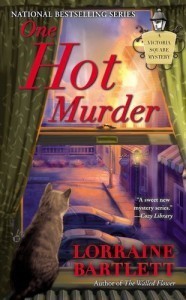 seem that your publishers have done well by your books. And yet you have chosen to self-publish some of your work. What led you to that decision?
seem that your publishers have done well by your books. And yet you have chosen to self-publish some of your work. What led you to that decision?
A: See above. My small press experience was a disaster. I had faith in my characters. My friend Sandra Parshall (author of the award-winning Rachel Goddard mysteries) once told me that I’d be best known for my Jeff Resnick characters. I don’t know if that’s true, because being successful as a self-published author is far different than success with traditional publishing, but I sell a LOT more copies of those books. Oddly, the crossover audience is small. I’ve had better luck convincing my cozy readers to try the darker Resnick stories than having the Resnick readers try the lighter cozy mysteries. Price is also a factor. My Resnick books sell for $4.99 as opposed to $7.99 for my traditionally published books in e format. The price difference gives them more of an incentive to try the books. My Resnick mysteries are also available as trade paperbacks, but don’t have the kind of distribution the cozies have. Still, the royalty for self-published books is far greater than an author gets with a traditional publisher. But the most important thing an author needs to be successful in self-publishing is experience. One really does need to write millions of words, figure out structure, plotting, and characterization, and present the best story they can write before readers will buy their work. Have there been flukes? Sure. J.K. Rowling may not be the best writer in the world, but there’s no doubt she is a spellbinding storyteller.
Q: As a writer with a major publishing house, you have the support of professionals in all sorts of areas, including editing, proofreading, marketing, sales, promotion, publicity, and design. How do you replicate all the work they do for your self-published books?
A: You can buy the same services as a one-shot deal and you’re not an indentured servant to a publisher or an agent. The profit margin is all yours, and is often recovered in a surprisingly fast time period.
Q: What are the best methods you found for promoting your self-published work?
A: Social networking. I rarely do face-to-face promotion anymore because it’s just not worth the time and effort. I had some very lovely signings for the earlier books, but people don’t show up any more. It’s not good for the author or the bookseller.
Q: Have your publishers encouraged your forays into self-publishing?
A: No. But when I offered my editor my Jeff Resnick series, I was turned down because he felt it would only garner a niche audience. I’m happy to say he was wrong. They haven’t discouraged me, either. I suspect that’s because I’m making money for them and they want to keep me happy. Should I be presented with a contract that says I can only write for them, I wouldn’t sign it. I write other things besides cozy mysteries, if only for my own entertainment. I wrote the fantasy novels while on vacation cruises. It was fun. I don’t want someone telling me what I can and cannot write.
Q: How does your self-published work sell in comparison to your published work? Or are we comparing apples to oranges?
A: It is apples and oranges. But I also make a lot more money with my self-published titles. Why not? I’ve got 30 of them, although the majority of them are short stories. Some were projects that were rejected by traditional publishers. It’s gratifying to be able to say, and have the numbers to back it up, that editors and agents were wrong. I believed in my characters and my work when others didn’t. I worked hard to make this happen.
Q: There’s a lot of controversy in the blogosphere about pricing of e-books. Some people feel that pricing books at ninety-nine cents makes a joke of the author’s work. Others complain that pricing them above ten dollars, as mainstream publishers do, arouses furious buyer resistance. What do you think? Is there a sweet spot for self-published books?
A: No doubt about it, a 99 cent book by an unknown writer has a better shot at selling than a $7.99 book by yet another unknown writer. I do have 99 cent titles, but they’re for short stories. My first was an Amazon short. I liked the idea of being able to sell a short story for 49 cents. When Kindle took off, they abandoned that program and made the minimum price 99 cents. I worried no one would buy short stories, but they do. Not in huge quantities, but doesn’t take long to earn out the cost of production.
A good starting place is $2.99. It rather depends on length. My shorter novels go for $2.99. The longer ones for $4.99. That seems reasonable to me. I think traditional publisher shoot themselves in the foot by charging the same price for an e book and a mass market paperback. (I haven’t really investigated the price relationship between e books and trade paperbacks.) They argue there are costs for formatting a manuscript for an e book, but that’s also called overhead. They’d do far better selling a high volume at a lower price than a lower volume at a higher price.
Often 99 cents is a loss leader. Price the first in a series at that price (or free) and if readers like it, they’ll try the rest of the series. It works well for grocery stores selling milk, etc. It also works well for authors.
Q: What does the advent of low-cost self-publishing mean for writers and publishers today? I used to see publishing and self-publishing as two completely separate tracks. More and more, though, we are seeing writers cross from one track to the other or, like you, straddle both. Can you venture an opinion about where this is heading?
A: I have no idea. But I like the freedom of writing what I want and that work finding an audience. Publishing used to nurture authors. They don’t do much of that any more. I don’t have to sell 100,000 copies of any given book to be successful as self-published author, simply because the royalty structure is so different. Authors who never earned out with their work now can earn a living wage from the titles that “failed” when traditionally published. Genres that were said to be dead (such as Regency Romance and horror) are finding plenty of new readers via e books.
Q: Would you advise a first-time novelist to pursue mainstream publication or to self-publish? Why?
A: It would depend on how well they wrote. Tossing a book up on Kindle and hoping it will fly is a crapshoot. What makes self-published authors successful is backlist, and putting out new material on a regular basis. When you’re tied to a traditional publisher, you’re often in the one-book a year trap. Stephen King and Nora Roberts were far too prolific for their traditional publishers and had to take pseudonyms. These days, they wouldn’t have had to. Traditional publishing still has a lot of old-fashioned ideas they’re holding onto for dear life … like if you saturate the market with your work, it won’t sell. I’m happy to prove that old saw wrong.
Q: What’s the most useful advice about writing you ever got? Who gave it to you?
A: Rewrite. A lot of people said it over and over again. And one of the beautiful things about self-publishing … you can rewrite a story and put out a new version. As technology changes, so do my books. I just refreshed one a couple of weeks ago—keeping it relevant. I like having that ability. Younger readers are going to be better able to relate to the story if it doesn’t read like history.
Q: What’s the most important advice you have for aspiring writers?
A: Read a lot. Write a lot. Rewrite a lot.
Q: Thanks so much for visiting, Lorraine. What’s next on your agenda?
A: After my next contract works…I have no idea. But no matter what I write, I’m sure I’m going to enjoy the journey.
I hope you found Lorraine’s remarks as interesting as I did. She’s a busy lady, but if possible she will drop by and respond to comments and questions, so please feel free to join the conversation.
Some exciting developments on my end, too, with A DANGEROUS FICTION coming out in July with Viking Books. The one I can share now is that we’ve scheduled two appearances in the NY area. I’ll be reading and signing books at the Barnes and Noble in Carle Place, NY, on July 29, 2013 at 7 PM and at the Mysterious Bookshop in Tribeca, NYC. I’m hoping Lorraine is wrong in this one thing at least, and that lots of people do come, because I love meeting readers face to face. See you there!

